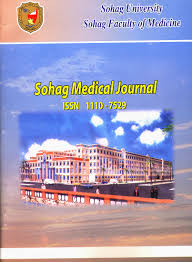Abstract
Introduction: Measurement of health-related quality of life (HRQOL) in patients with
osteoarthritis (OA) helps rheumatologists and orthopedists to understand the impact of the
disease and make health services more patient-centered.
Aim of the work: To measure the quality of life in patients with knee OA and to study the
effect of diabetes mellitus (DM) and or hypertension (HT) on this quality. We also aimed to
ascertain the association between socio-demographic status of patients with knee OA and
their quality of life.
Patients and Methods: A cross-sectional study was conducted on 198 patients with knee
OA using the Short Form-36 (SF-36) questionnaire.
Results: The mean age of patients was 58.95 ± 4.50 years with female constituted 109
(55.05%) of the patients. Patients were classified into four groups; group I (45 patients)
included patients with knee OA alone, group II (59 patients) included patients with knee OA
associated with DM, group III (56 patients) included patients with knee OA associated with
HT and group IV (38 patients) included patients with knee OA associated with DM and HT.
High significant difference in the QOL domains was found between patients with knee OA
alone and those with Knee OA associated with DM and or HT. The physical health
component score showed lower score as compared to the mental health component score in
all patients with knee OA. Male patients had better scores in most of the QOL domains.
Educated, unemployed patients and patients with higher BMI scored lower in most of the
QOL domains. There was a high significant negative correlation between age and both
physical and mental component scores (p < 0.001) in patients with knee OA which indicated
the deterioration of quality of life as patients became older. A similar high significant
negative correlation was found between Body Mass Index (BMI) and both physical and
mental component scores.
Conclusion: Patients with knee OA especially those with associated co-morbidity have
relatively poor quality of life as regard the physical health status but less impact was seen on
the patients’ mental health status. Further research is needed to confirm our findings and to
assess causality.


